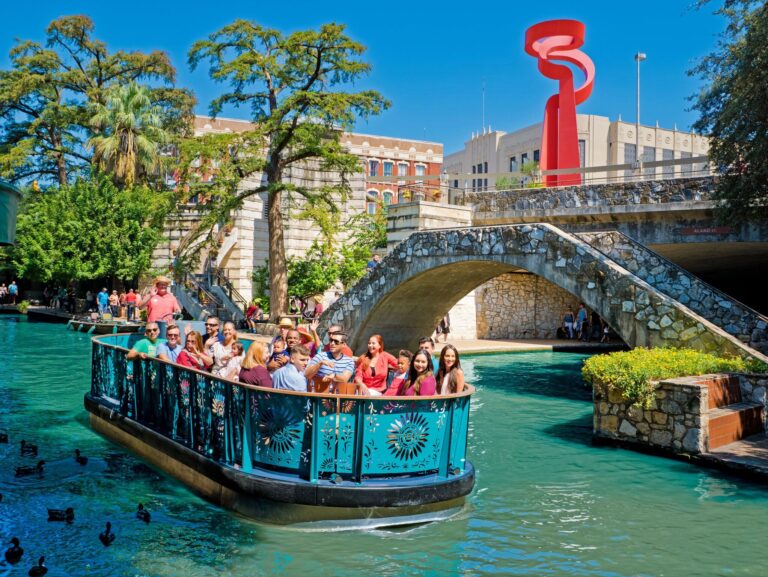San Antonio Tourism Defies National Decline in International Visitors
Despite a nationwide reduction in international tourists visiting the United States, San Antonio’s tourism sector remains remarkably vibrant. This Texas city continues to draw a consistent influx of travelers, bolstering the local economy when many other destinations are struggling. Experts and city officials attribute this success to a blend of strong domestic tourism and well-executed promotional campaigns that highlight San Antonio’s distinctive cultural and historical assets. This resilience sets the city apart in a year marked by challenges for the broader U.S. tourism industry.
Several key elements contribute to this sustained growth:
- Focused Regional Outreach: Marketing efforts concentrate on attracting visitors from neighboring states and regional hubs to offset the drop in overseas arrivals.
- Event-Driven Attractions: Enhanced funding for festivals, conventions, and cultural showcases that appeal to a wide range of audiences.
- Collaborative Tourism Packages: Partnerships between local businesses and iconic landmarks create bundled experiences that encourage longer stays.
| Industry Segment | Growth Rate Q1 2024 | Primary Visitor Groups |
|---|---|---|
| Hospitality | +7% | Domestic and regional travelers |
| Retail | +5% | Family vacationers |
| Entertainment | +8% | Millennial and Gen Z professionals |
Strategic Local Initiatives Driving San Antonio’s Tourism Growth
Amid a nationwide slump in international travel, San Antonio’s tourism industry has shown impressive adaptability. City leaders and business owners have capitalized on the city’s rich cultural heritage, renowned culinary scene, and historic sites to attract a growing number of domestic visitors. This strategic pivot has not only compensated for fewer foreign tourists but also invigorated economic activity across various neighborhoods. Investments in community events, targeted marketing, and collaborations with regional travel agencies have elevated San Antonio’s profile as an accessible and dynamic destination for American travelers.
Key initiatives fueling this momentum include:
- Robust Digital Marketing: Customized social media campaigns and virtual tour packages designed specifically for U.S. audiences.
- Community-Centered Experiences: Emphasis on interactive cultural festivals and support for local artisans and craftspeople.
- Diverse Lodging Options: From boutique hotels to flexible short-term rentals catering to a wide range of visitor preferences.
| Initiative | Result |
|---|---|
| Gastronomic Tours | +12% Increase in visitor expenditure |
| Historic Site Enhancements | +8% Growth in weekend visitor numbers |
| Expanded Online Presence | +15% Rise in digital bookings |
Domestic Tourism Boosts San Antonio Amid International Visitor Decline
To counterbalance the downturn in international arrivals, San Antonio has implemented innovative strategies targeting domestic tourists. By showcasing its rich history, including landmarks like The Alamo, and vibrant food culture, the city appeals strongly to Texans and visitors from surrounding states. Initiatives such as exclusive weekend getaway packages, family-oriented festivals, and events celebrating Texan heritage have successfully maintained steady visitor numbers despite the broader national decline.
Collaborative efforts between local businesses and tourism agencies include:
- Special discounts on lodging and dining tailored for in-state residents
- Enhanced digital marketing campaigns promoting short trips and weekend escapes
- Curated itineraries emphasizing outdoor adventures and cultural exploration
| Tourism Category | 2019 Visitor Count | 2023 Visitor Count | Percentage Change |
|---|---|---|---|
| Domestic Visitors | 4.2 million | 5.1 million | +21% |
| International Visitors | 1.8 million | 1.3 million | -28% |
| Hotel Occupancy Rate | 75% | 78% | +3% |
Expert Insights to Sustain San Antonio’s Tourism Growth
Tourism professionals stress the importance of continually innovating local experiences to maintain San Antonio’s competitive edge. Leveraging the city’s cultural richness alongside cutting-edge technology—such as augmented reality tours and interactive museum exhibits—can captivate both domestic and international visitors. Cross-sector collaboration among restaurants, entertainment venues, and retail outlets is essential to create seamless, memorable experiences that encourage longer stays and repeat visits.
Experts also recommend focusing marketing efforts on emerging demographics and diverse markets. Multilingual promotions and culturally inclusive events can expand San Antonio’s reach amid shifting global travel patterns. Additionally, employing data analytics and gathering ongoing visitor feedback will enable the city to refine its offerings dynamically, ensuring it remains an attractive and welcoming destination.
Conclusion: San Antonio Demonstrates Resilience in Tourism Sector
While international travel to the U.S. faces persistent obstacles, San Antonio’s tourism industry stands out for its steady performance and adaptability. The city’s ability to attract a robust domestic audience and implement effective marketing strategies has kept local businesses thriving. This success story underscores the varied dynamics within the travel industry and offers a hopeful outlook for San Antonio’s ongoing economic revitalization.




